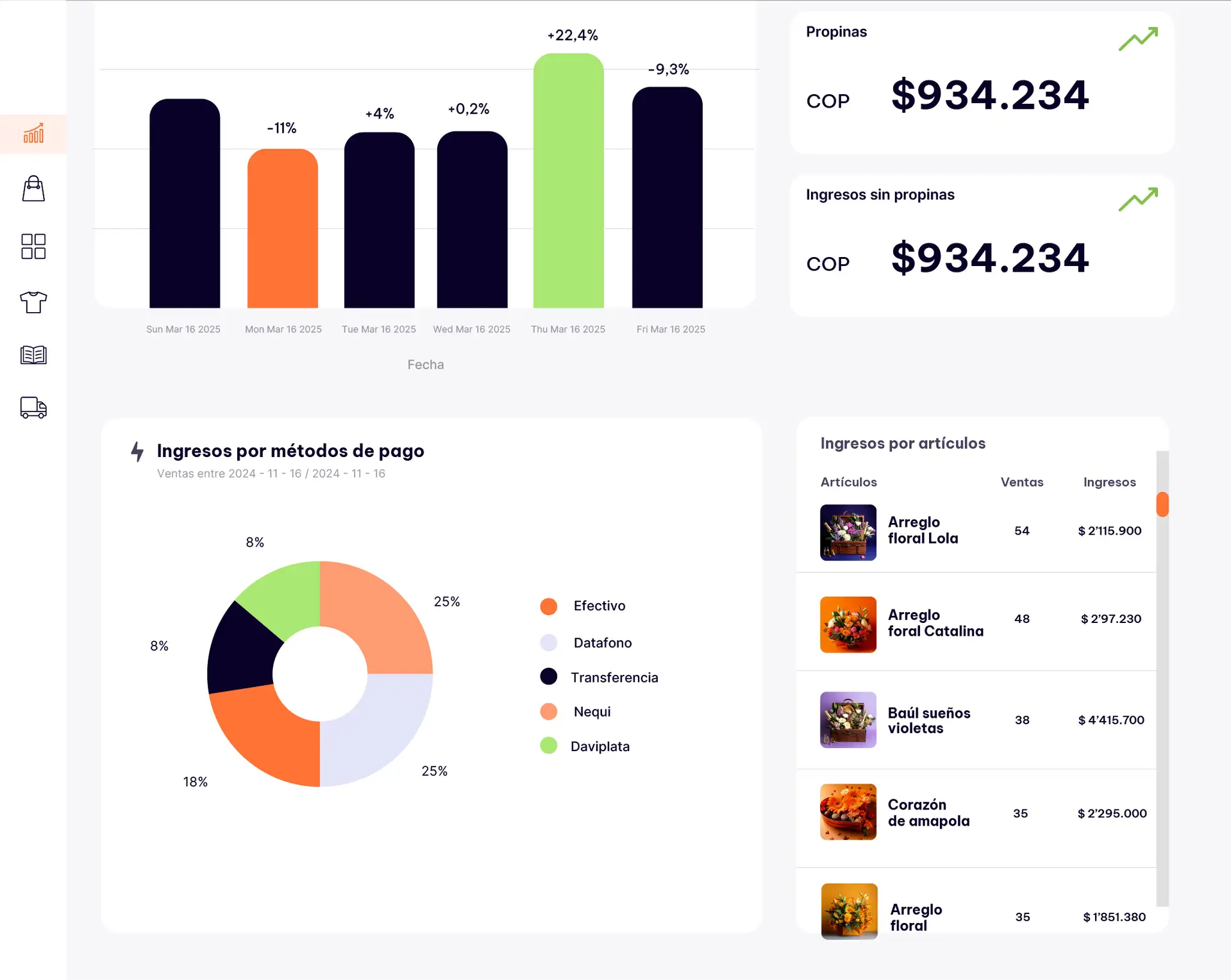Introduction
Every successful retail business dreams of having customers who don’t just buy—they become advocates, champions, and genuine fans who spread the word about your brand with infectious enthusiasm. These aren’t just satisfied customers; they’re brand evangelists who voluntarily promote your business because they believe in what you offer and want others to experience the same value they’ve discovered.
In today’s hyper-competitive retail landscape, where consumers are bombarded with countless options and advertising messages, authentic word-of-mouth marketing has become more valuable than ever. When someone receives a genuine recommendation from a friend, family member, or trusted peer, they’re 92% more likely to trust that recommendation over traditional advertising. This is the power of brand evangelism—turning your customers into a passionate sales force that works for free because they genuinely care about your success.
But creating brand evangelists isn’t about manipulation or clever marketing tricks. It’s about building authentic relationships, delivering exceptional value, and creating experiences so remarkable that people can’t help but share them with others. It’s about understanding that behind every purchase is a human being with emotions, desires, and the natural inclination to share great discoveries with people they care about.
The journey from customer to brand evangelist doesn’t happen overnight, nor does it happen by accident. It requires intentional effort, genuine care for your customers’ success and satisfaction, and a deep understanding of what motivates people to become advocates for the brands they love. When you master this transformation, you’ll discover that your most powerful marketing tool isn’t your advertising budget—it’s the genuine enthusiasm of customers who have become true believers in your brand’s mission and value.
1. Understanding the Psychology Behind Brand Loyalty
The foundation of brand evangelism lies in understanding why people become emotionally attached to certain brands and businesses. At its core, brand loyalty transcends transactional relationships and enters the realm of emotional connection, identity alignment, and community belonging.
Research in consumer psychology reveals that people don’t just buy products or services—they buy into stories, values, and identities that resonate with their own beliefs and aspirations. When customers see your brand as an extension of their identity or as a representation of their values, they naturally become protective and promotional of that brand. This psychological phenomenon explains why some customers will defend their favorite brands even in the face of criticism or competitive alternatives.
The emotional component of brand loyalty is particularly powerful in retail environments. Customers who have positive emotional experiences with your brand are three times more likely to recommend your business to others and five times more likely to repurchase. These emotions can be triggered by various factors: exceptional customer service that makes them feel valued, product quality that exceeds expectations, or brand values that align with their personal beliefs.
Trust plays an equally crucial role in this psychological equation. Trust is built through consistency—consistently delivering on promises, maintaining quality standards, and treating customers with respect and honesty. When customers trust your brand, they’re willing to give you the benefit of the doubt during challenging situations and become advocates who defend your reputation in conversations with others.
The sense of community and belonging also drives brand evangelism. Humans are inherently social creatures who seek connection and shared experiences. When your brand creates opportunities for customers to connect with like-minded individuals, you’re fostering a community where brand evangelism naturally flourishes. These communities become self-reinforcing, as members share experiences, recommendations, and enthusiasm with both existing and potential customers.
Practical Exercise: Create a simple survey asking your current customers what initially attracted them to your brand and what keeps them coming back. Look for patterns in their responses that reveal emotional triggers and value alignments you can strengthen and leverage.
2. Creating Exceptional Customer Experiences That Inspire Sharing
Exceptional customer experiences are the cornerstone of brand evangelism. These experiences go beyond meeting expectations—they create moments of delight, surprise, and genuine appreciation that customers feel compelled to share with others. The key is understanding that every touchpoint with your brand is an opportunity to create a memorable experience.
The customer experience begins before the actual purchase and extends long after the transaction is complete. It includes every interaction: how customers discover your brand, their first impression of your store or website, the purchasing process, product unboxing, usage experience, and ongoing support. Each of these touchpoints presents an opportunity to exceed expectations and create shareable moments.
Personalization plays a crucial role in creating exceptional experiences. When customers feel recognized and valued as individuals rather than anonymous transactions, they develop stronger emotional connections to your brand. This can be as simple as remembering a customer’s name and preferences, or as sophisticated as providing customized product recommendations based on their purchase history and stated preferences.
Surprise and delight tactics can transform routine interactions into memorable experiences. This might involve including a handwritten thank-you note with purchases, offering unexpected upgrades or bonuses, or providing solutions to problems customers didn’t even know they had. The element of surprise creates positive emotional spikes that are more likely to be remembered and shared.
Problem resolution also presents powerful opportunities to create brand evangelists. When things go wrong—and they inevitably will—how you handle the situation can actually strengthen customer loyalty more than if the problem had never occurred. Customers who experience exceptional problem resolution often become your strongest advocates because they’ve witnessed your commitment to their satisfaction firsthand.
The physical and digital environments where customers interact with your brand significantly impact their experience. Clean, welcoming spaces that reflect your brand values, user-friendly websites that make purchasing effortless, and seamless integration between online and offline experiences all contribute to the overall customer experience.
Practical Exercise: Map out your complete customer journey from awareness to post-purchase follow-up. Identify three specific touchpoints where you could add unexpected value or create delightful surprises, then implement one improvement this week.
3. Building Authentic Relationships Through Community Engagement
Authentic relationships form the backbone of brand evangelism, and community engagement provides the platform for these relationships to flourish. Building a community around your brand creates opportunities for customers to connect not only with your business but also with each other, fostering a sense of belonging that extends beyond individual transactions.
Community building starts with identifying shared interests, values, or challenges that unite your customers. For retail businesses, this might center around lifestyle choices, professional needs, hobby interests, or social causes that align with your brand values. Once you’ve identified these commonalities, you can create spaces and opportunities for customers to engage around these shared interests.
Social media platforms offer powerful tools for community building, but the key is choosing the right platforms where your customers naturally gather and engage in meaningful ways. Facebook groups, Instagram communities, or LinkedIn networks can serve as virtual gathering places where customers share experiences, ask questions, and support each other. Your role in these communities should be that of a facilitator and valuable contributor rather than a constant promoter.
Local community engagement is equally important for brick-and-mortar retailers. Participating in community events, supporting local causes, or hosting educational workshops creates opportunities for face-to-face interactions that strengthen relationships. These in-person connections often translate into stronger online engagement and word-of-mouth promotion.
User-generated content campaigns can transform customers into active community participants and brand ambassadors. When customers share photos, reviews, or stories about their experiences with your products or services, they’re essentially creating authentic marketing content while strengthening their connection to your brand community. Encouraging and showcasing this content makes customers feel valued and recognized.
Exclusive access and insider information help community members feel special and connected to your brand. This might include early access to new products, behind-the-scenes content, or special events reserved for loyal customers. These exclusives create a sense of privilege and belonging that strengthens community bonds.
Feedback loops are essential for maintaining authentic community relationships. Regularly seeking input from community members and actually implementing their suggestions demonstrates that you value their opinions and are committed to serving their needs. This responsiveness builds trust and encourages continued engagement.
Practical Exercise: Start a simple online community around one specific interest that your customers share. Begin by posting valuable content and asking questions that encourage discussion. Commit to engaging authentically with every response for the first month.
4. Implementing Reward Systems That Encourage Advocacy
Effective reward systems go beyond traditional loyalty programs to create structured incentives for customer advocacy and brand evangelism. The most successful reward systems recognize and celebrate customers not just for their purchases, but for their engagement, referrals, and community participation.
Traditional points-based loyalty programs have their place, but advocacy-focused reward systems operate on different principles. They reward behaviors that directly contribute to brand growth: referrals, social media shares, reviews, user-generated content, and community participation. This approach aligns customer incentives with business growth objectives while making customers feel valued for their promotional efforts.
Tiered reward systems create progression pathways that encourage deeper engagement over time. Customers can advance through different levels based on their advocacy activities, unlocking increasingly valuable rewards and exclusive access. This gamification element taps into people’s natural desire for achievement and status recognition.
Referral programs represent one of the most direct forms of advocacy rewards. When structured properly, these programs benefit both the referring customer and the new customer, creating positive experiences for everyone involved. The key is making the referral process simple and ensuring that rewards are meaningful enough to motivate action without being so generous that they attract low-quality referrals.
Recognition rewards often prove more motivating than monetary incentives. Featuring customer stories, highlighting community contributions, or creating customer spotlight programs can provide the social recognition that many people value more than discounts or freebies. This type of recognition also serves as social proof for other customers and potential customers.
Experiential rewards create memorable moments that customers are likely to share with others. Instead of offering standard discounts, consider providing exclusive experiences: behind-the-scenes tours, meet-and-greets with brand founders, early access to events, or personalized consultations. These experiences become stories that customers naturally share with their networks.
The timing and delivery of rewards significantly impact their effectiveness. Immediate recognition and rewards for advocacy behaviors reinforce positive actions and encourage repetition. Surprise rewards can be even more powerful than expected ones, as they create positive emotional spikes that strengthen brand attachment.
Measurement and adjustment are crucial for maintaining effective reward systems. Track which rewards generate the most advocacy behavior, monitor the quality of referrals and engagement, and regularly survey participants to understand what motivates them most. Use this data to continuously refine your reward offerings.
Practical Exercise: Design a simple three-tier advocacy reward system that recognizes customers for referrals, social media engagement, and reviews. Start with basic rewards you can implement immediately, then expand based on what generates the most genuine advocacy activity.
5. Measuring and Nurturing Long-term Brand Evangelism
Measuring brand evangelism requires looking beyond traditional metrics to understand the depth and authenticity of customer advocacy. While sales numbers and customer retention rates provide valuable insights, true brand evangelism measurement focuses on voluntary promotional behaviors and the quality of customer relationships.
Net Promoter Score (NPS) serves as a foundational metric for measuring brand evangelism potential. Customers who rate their likelihood to recommend your business as 9 or 10 out of 10 are your potential brand evangelists. However, the real value lies in understanding why they would recommend you and what specific experiences or attributes drive their enthusiasm.
Social media engagement metrics provide insights into active brand advocacy. Monitor mentions, shares, user-generated content, and the sentiment of customer posts about your brand. Customers who regularly engage with and share your content are demonstrating evangelist behaviors. Pay attention to the quality and authenticity of these interactions, not just the quantity.
Referral tracking reveals your most effective brand ambassadors. Monitor which customers are generating the highest number and quality of referrals. These customers represent your core evangelist group and can provide valuable insights into what motivates advocacy behavior.
Customer lifetime value and purchase frequency help identify customers who have moved beyond occasional buyers to become committed brand supporters. Evangelists typically demonstrate higher lifetime values and more consistent purchasing patterns than average customers.
Nurturing long-term brand evangelism requires ongoing relationship maintenance and continuous value creation. Regular communication that provides value beyond promotional messages helps maintain engagement. This might include educational content, industry insights, exclusive previews, or community highlights that keep your brand top-of-mind for positive reasons.
Feedback implementation demonstrates that you value customer input and are committed to continuous improvement. When evangelists see their suggestions implemented, it reinforces their sense of partnership with your brand and encourages continued advocacy.
Evolution and adaptation ensure that your evangelism efforts remain relevant and engaging over time. Customer needs, preferences, and communication channels change, and your evangelism strategies must evolve accordingly. Regularly assess and update your approaches based on customer feedback and changing market conditions.
Recognition and appreciation should be ongoing elements of your evangelism program. Regularly acknowledge and celebrate your brand evangelists through various channels. This recognition not only maintains their enthusiasm but also demonstrates to other customers the value you place on advocacy.
Practical Exercise: Create a simple tracking system to monitor monthly NPS scores, social media mentions, and referral activity. Set up a monthly review process to identify your most active evangelists and send them personalized appreciation messages acknowledging their support.
Final Reflection
The journey from customer to brand evangelist represents one of the most powerful transformations in retail business. When you successfully cultivate genuine brand evangelists, you create a sustainable competitive advantage that no marketing budget can replicate. These passionate advocates become an extension of your sales team, working tirelessly to promote your brand because they genuinely believe in its value and want others to experience the same benefits they’ve discovered.
The strategies outlined in this guide require commitment, authenticity, and patience. Building genuine relationships and creating exceptional experiences takes time, but the compound effects of brand evangelism grow exponentially over time. Each satisfied customer who becomes an evangelist has the potential to influence dozens of others, creating a ripple effect that can transform your business growth trajectory.
Remember that brand evangelism isn’t about manipulation or clever tactics—it’s about genuinely caring for your customers’ success and satisfaction to the point where they can’t help but share their positive experiences with others. It’s about creating value so consistently and remarkably that customers become emotionally invested in your brand’s success.
The most successful retail entrepreneurs understand that in today’s connected world, every customer has the potential to become a powerful brand ambassador. Social media, online reviews, and word-of-mouth recommendations carry more weight than traditional advertising. When you focus on creating brand evangelists, you’re investing in the most credible and cost-effective marketing channel available.
Don’t wait until you feel completely ready to begin implementing these strategies. Start with small, authentic gestures that show customers you value them as individuals. Focus on creating one exceptional experience at a time, building genuine community connections, and recognizing customers who support your brand. The path to brand evangelism is built through consistent daily actions that demonstrate your commitment to customer success.
Your customers are waiting to become your biggest fans—they just need reasons to believe in your brand and opportunities to express their enthusiasm. Give them those reasons, create those opportunities, and watch as your customer base transforms into a community of passionate advocates who drive your business growth through their genuine enthusiasm and authentic recommendations.





